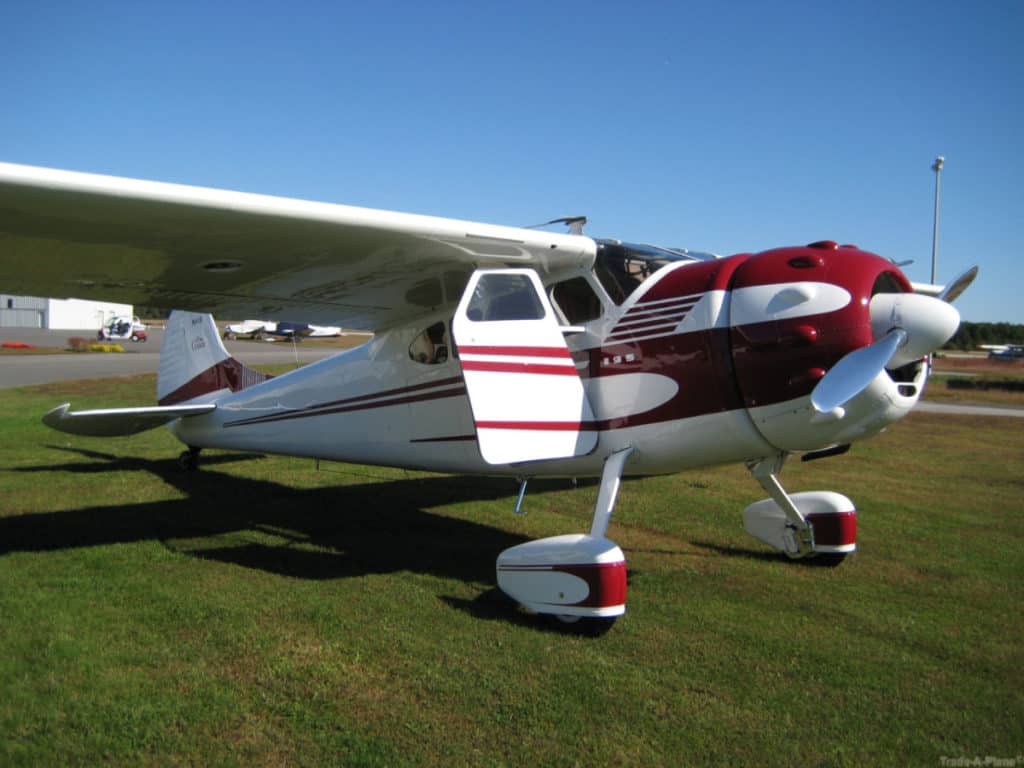
Cessna aircraft are probably the most widely recognized and certainly most produced airplanes in the world today. When you are deciding between what airplane to train in, rent, or buy, there’s a good chance a Cessna is at least on your list of options, if not your outright favorite. Because of this, it’s a very common question to search for the useful load of a Cessna.
Rather than just focus this post on one particular Cessna aircraft, let’s just look at all of them in order of size and cover all of their useful loads with some other helpful category. For this post I’m only focusing on piston engine Cessna’s as throwing in turboprops and jets will get a bit lengthy and it’s a little out of scope if you’re just looking for the common 172’s, 182’s, and the like.
All of the below metrics are simply averages, and each plane will have a unique and specific useful load based on the individual weight and balance of that particular airplane. DO NOT USE these numbers for your own weight and balance, as they are just meant to be general guidelines. Your safety as a pilot is your responsibility. Use the weight and balance of your particular aircraft (NOT THIS ARTICLE) for the safety of your flight.
Useful Load (Carrying Capacity) of a Cessna 120/140
The Cessna 140 has an average empty weight of 890 pounds and a gross weight of 1,450 pounds, meaning its effective useful load is around 560 pounds. It has a typical fuel capacity of 25 gallons which means the full fuel useful load is approximately 410 pounds.
Also commonly grouped together with a Cessna 120, the Cessna 140 started being produced in 1946 and was a two seat training aircraft. The Cessna 120 was effectively the same airplane as the 140 but without flaps and the electrical system (radios, lights, battery, starter) was optional. With a humble 85hp engine you can economically cruise just about anywhere in this small airplane, albeit slowly. Production ended in 1950 and was replaced by the Cessna 150.

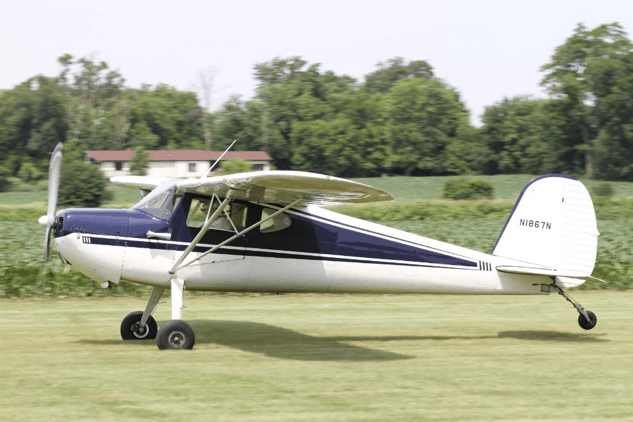
Useful Load (Carrying Capacity) of a Cessna 150
The Cessna 150 has an average empty weight of 1,122 pounds and a gross weight of 1600 pounds, meaning its effective useful load is around 478 pounds. It has a typical fuel capacity of 26 gallons which means the full fuel useful load is approximately 322 pounds.
The Cessna 150 is the fifth most produced civilian plane ever built, with nearly 24,000 made. Cessna stopped producing the 150 in 1985 and hasn’t successfully focused on the 2-seat market since. Because of this, the 150 and 152 (covered next) are some of the only true “bargain buys” available for purchase today. They won’t carry much but are small, simple, and easy to maintain.

Useful Load (Carrying Capacity) of a Cessna 152
The Cessna 152 has an average empty weight of 1,081 pounds and a gross weight of 1670 pounds, meaning its effective useful load is around 589 pounds. It has a typical fuel capacity of 26 gallons which means the full fuel useful load is approximately 433 pounds. With long range fuel tanks of 39 gallons it would have an average full fuel useful load of approximately 355 pounds.
The main difference in the 152 from the 150 is an extra 10hp in the upgraded engine, an increase in useful load of around 100 pounds, and flaps that extend 40 degrees instead of 30.
Fewer 152s were made than 150s but that was mainly because 152s weren’t introduced until 1977 and all production stopped in 1985. All in all, nearly 8,000 were produced. Interestingly, there was a model of the 152 “Aerobat” that was approved for certain aerobatic maneuvers and could handle up to +6g and -3g forces. That’s pretty impressive for a humble bird.

Useful Load (Carrying Capacity) of a Cessna 162 Skycatcher
The Cessna 162 has an average empty weight of 830 pounds and a gross weight of 1320 pounds, meaning its effective useful load is around 490 pounds. It has a typical fuel capacity of 24 gallons which means the full fuel useful load is approximately 346 pounds.
The Cessna 162 Skycatcher was Cessna’s attempt at a light sport aircraft that didn’t have the market response they wanted and was only produced from 2009-2013. Only 275 were produced.
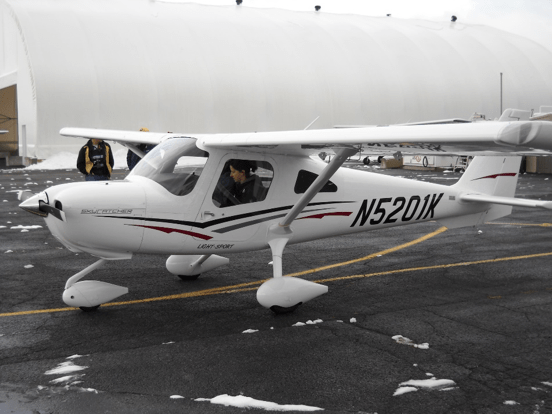
Useful Load (Carrying Capacity) of a Cessna 170
The Cessna 170 has an average empty weight of 1,205 pounds and a gross weight of 2,200 pounds, meaning its effective useful load is around 995 pounds. It has a typical fuel capacity of 42 gallons which means the full fuel useful load is approximately 743 pounds.
The 170 began production in 1948 and was essentially a large 140 with a bigger engine (145hp vs. 85hp) and larger fuel tanks (42 gallons vs. 25). It was later modified to become the U.S. Army L-19 “Bird Dog” which was used for various military purposes for decades. The 170 was an all-around good airplane on paper and in practice, and was later replaced by the 172 (the most produced civilian airplane ever built) in 1956.

Useful Load (Carrying Capacity) of a Cessna 172 Skyhawk
The Cessna 172 has an average empty weight of 1,691 pounds and a gross weight of 2,450 pounds, meaning its effective useful load is around 759 pounds. It has a typical fuel capacity of 56 gallons which means the full fuel useful load is approximately 423 pounds.
The Cessna 172 is the most produced civilian aircraft ever built, with more than 44,000 made and they are still in production today. Models have progressed quite a bit and the specs of an original 1956 model are considerably different from models produced today. They have changed the engines over the years (going from 160hp to 180hp in the “SP” models) and even experimented with diesel fuel engines. Because of its simple design, forgiving flight characteristics, and straightforward maintenance, the 172 is the most widely used and recognized airplane in the world. While the aircraft does have four seats, carrying the weight of a pilot and three passengers is unrealistic in most scenarios.
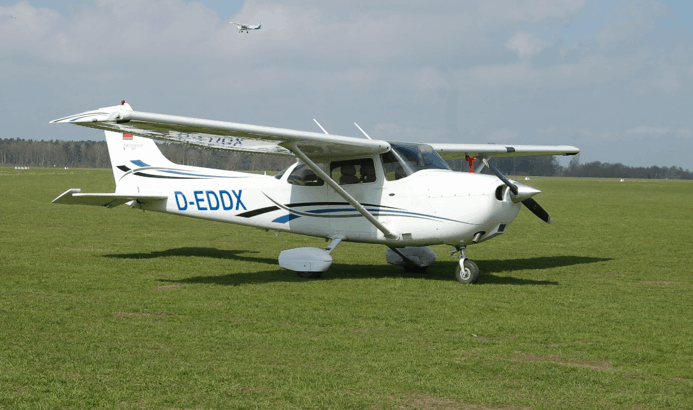
Useful Load (Carrying Capacity) of a Cessna 175 Skylark
The Cessna 175 has an average empty weight of 1,410 pounds and a gross weight of 2,450 pounds, meaning its effective useful load is around 1,040 pounds. It has a typical fuel capacity of 52 gallons which means the full fuel useful load is approximately 728 pounds.
The Cessna 175 was produced starting in 1958 and was meant to fill the gap between the 172 and 182 from a cost and speed perspective. 2,106 were built from 1958 until 1962 as pilots did not take to the lower engine TBO time of 1,200 hours (this was due to hotter engine temperatures of a geared engine that would run at 3,200 rpms while the prop was turning 2,400). It was a good design on paper with higher airspeed and good short field performance, but in practice wasn’t compelling enough to continue producing the 175 alongside the 172 and the 182.
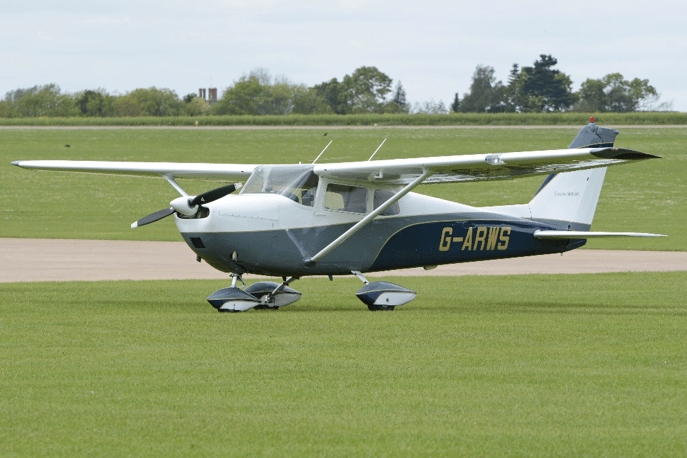
Useful Load (Carrying Capacity) of a Cessna 177 Cardinal
The Cessna 177 has an average empty weight of 1,495 pounds and a gross weight of 2,500 pounds, meaning its effective useful load is around 1,005 pounds. It has a typical fuel capacity of 49 gallons which means the full fuel useful load is approximately 711 pounds. The retractable gear model has an increased useful load of around 100 pounds.
The Cardinal was produced from 1968-1978 and was meant to be a replacement for the 172 with slightly better useful load and cruise speed. Towards the end of its production life the Cardinal came with a variable pitch prop and retractable gear which ended up being slightly too complex for the training pilot and the 172 prevailed as the primary trainer to continue production. One of the perks people commonly acknowledge about the Cardinal is that you always have great visibility outside of the cockpit since the wings are mounted farther back on the fuselage than on 172’s. Cardinals have a pretty devout following and if you ever meet a pilot who owns one, they won’t leave until they can convince you that it’s the most perfectly balanced airplane Cessna ever made. All in all around 4,300 were produced.

Useful Load (Carrying Capacity) of a Cessna 180 Skywagon
The Cessna 180 has an average empty weight of 1,700 pounds and a gross weight of 2,800 pounds, meaning its effective useful load is around 1,100 pounds. It has a typical fuel capacity of 55 gallons which means the full fuel useful load is approximately 770 pounds, though with extended range fuel tanks of 88 gallons the full fuel useful load is approximately 572 pounds.
The Cessna 180 first rolled off the production line in 1952 and was meant to be Cessna’s competitive answer to the popular Beechcraft Bonanza. While the Cessna 170 was extremely popular at the time it could not compete with the speed and useful load of the Bonanza. So, out came the 180 with an upgraded engine and increased carrying capacity from the 170. Ultimately Cessna built 6,193 180’s and stopped production in 1981. They are a coveted bush airplane to this day due to their versatility, rugged design, and performance capabilities.

Useful Load (Carrying Capacity) of a Cessna 185 Skywagon
The Cessna 185 has an average empty weight of 1,748 pounds and a gross weight of 3,350 pounds, meaning its effective useful load is around 1,602 pounds. It has a typical fuel capacity of 65 gallons which means the full fuel useful load is approximately 1,212 pounds.
Around 4,400 Cessna 185’s were produced between 1961 and 1985, and they were basically a beefed up version of a 180 (which already had enough grit on its own). It started with a 260hp engine (30 more than the 180) and was later offered with a 285hp engine. It is technically a 6-seat airplane but most people would pull the rear two seats out for weight and practical reasons (it was too small to realistically seat adults there).
Because of the upgraded performance and carrying capacity, 185’s became extremely popular not only in bush operations but also seaplane charters. Today you’ll find a lot of 185’s on floats because they can best handle the weight and performance needs for charter flights. If you’ve never heard one takeoff, the supersonic tips of the 3-blade props is something you’ll never forget. Plug your ears and enjoy the horsepower on display!
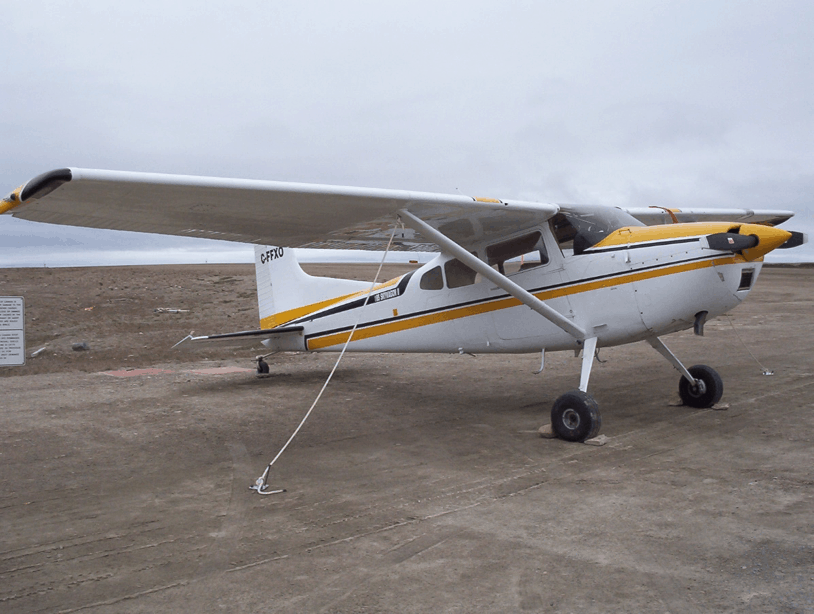
Useful Load (Carrying Capacity) of a Cessna 182 Skylane
The Cessna 182 has an average empty weight of 1,970 pounds and a gross weight of 3,100 pounds, meaning its effective useful load is around 1,130 pounds. It has a typical fuel capacity of 55 gallons which means the full fuel useful load is approximately 800 pounds.
The Cessna 182 is arguably one of the best airplanes Cessna ever built. It’s certainly one of the most produced with over 20,000 made. It rolled off the production line in 1956 and is still in production today (minus a few small production hiatuses in the middle that affected more than just the 182).
It is one of the few airplanes that has four seats that can actually comfortably carry four people along with a reasonable amount of fuel. The gross weight increased with the evolution of the aircraft design, and while the A model started with 2,650 pounds of gross weight the more recent T models are up to 3,100 pounds.
As Cessna has reduced the number of piston aircraft still being produced today, the 182 is one of the few models that has stood the test of time and market demand. It is one of those airplanes that won’t do any one thing amazing well, but it will do anything respectably well. For that it has earned the love and trust of many, many pilots. In fact my first airplane was a 182 because I knew that it would fit such a wide range of missions. It’s been a fantastic airplane.
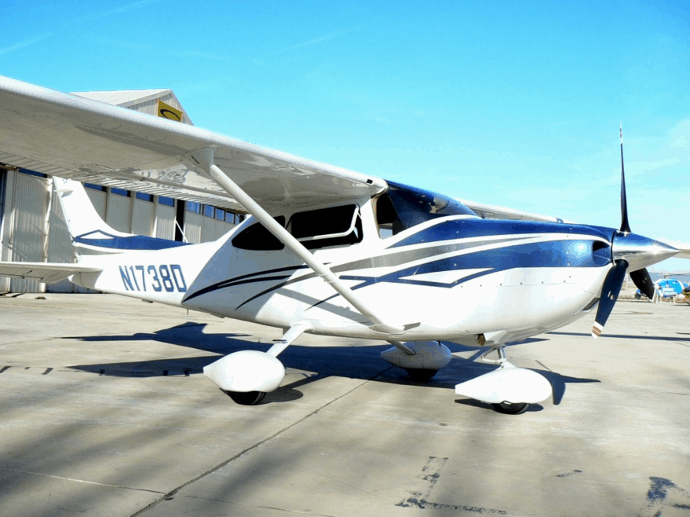
Useful Load (Carrying Capacity) of a Turbo 182 Skylane
The Turbo Cessna 182 has an average empty weight of 2,017 pounds and a gross weight of 3,100 pounds, meaning its effective useful load is around 1,083 pounds. It has a typical fuel capacity of 92 gallons which means the full fuel useful load is approximately 531 pounds.
The turbo 182 is a slightly beefier version of the stock 182, built for longer range trips and higher altitudes. The turbocharged model of the 182 won’t necessarily carry more, but it has better climb and cruise performance than its non-turbocharged counterpart.
Useful Load (Carrying Capacity) of a Cessna 195
The Cessna 195 Businessliner has an average empty weight of 2,100 pounds and a gross weight of 3,350 pounds, meaning its effective useful load is around 1,250 pounds. It has a typical fuel capacity of 75 gallons which means the full fuel useful load is approximately 800 pounds.
The Cessna 195 (and 190, covered in a moment) is a classic and recognizable airplane built from 1947-1954. Ultimately around 1,180 were built, and Cessna also ended up producing a 190 which was basically the same airplane but with a slightly smaller engine (240-245hp, depending on the model, instead of 300hp).
They were built to be executive transport airplanes with roomy interiors and fast cruising speeds. Cessna did make a factory float plane version of the 195 but those are extremely rare today. In fact, finding a 190/195 in the US today isn’t a common sight and they have become collectors’ items of a nostalgic post-war era of aviation.

Useful Load (Carrying Capacity) of a Cessna 206 Stationair
The Cessna 206 Stationair has an average empty weight of 2,000 pounds and a gross weight of 3,600 pounds, meaning its effective useful load is around 1,600 pounds. It has a typical fuel capacity of 59 gallons which means the full fuel useful load is approximately 1,246 pounds, though with extended range tanks of 88 gallons the full fuel useful load is approximately 896 pounds.
The Cessna 206 is the true sports utility vehicle of the sky. It is one of the only airplanes that will actually do what it is advertised to do, being able to carry a full load of passengers, bags, and fuel. It began production in 1962 actually as a Cessna 205 (which was basically a fixed-gear version of a 210 with the same engine), but was later upgraded to a Cessna 206 in 1964 with a larger engine.
The 206 has stood the test of time and is one of Cessna’s few piston aircraft still in production today with more than 8,500 built. It’s not much for looks, but function over form is the name of the game for the 206 with its load hauling ability.

Useful Load (Weight Capacity) of a Cessna Turbo 206 Stationair
The Cessna Turbo 206 Stationair has an average empty weight of 2,274 pounds and a gross weight of 3,600 pounds, meaning its effective useful load is around 1,326 pounds. It has a typical fuel capacity of 92 gallons which means the full fuel useful load is approximately 774 pounds.
The Turbo 206 doesn’t get you a higher useful load than the normally aspirated 206, but it will help with takeoff, climb, and cruise performance just as any other turbocharged airplane would. It can be a great load hauler in the high density altitude of mountain flying, or take heavy loads cross country at high altitudes for more favorable winds. Not everyone will need a Turbo 206 over a normal 206, but if your average mission leverages the right features of the airplane that excel, it can be a really unique machine.
Useful Load (Weight Capacity) of a Cessna 207
The Cessna 207 has an average empty weight of 2,172 pounds and a gross weight of 3,800 pounds, meaning its effective useful load is around 1,628 pounds. It has a typical fuel capacity of 61 gallons which means the full fuel useful load is approximately 1,262 pounds.
The Cessna 207 is an unattractive, roomier version of a Cessna 206. From the looks of it, it’s trying to be something between a 206 and 208 Caravan, which exactly what its role is. Similar to a 206 it can load up with full fuel and a full load of people and gear and still get off the ground.
The 207 isn’t commonly found for normal general aviation flights but its most common use is in charter operations that need the space and accessibility of the 207’s cabin and doors. Only a few more than 600 were ever built but they’re not uncommon to see today. I’ve mostly seen them doing charter and sightseeing operations.

Useful Load (Carrying Capacity) of a Cessna 210 Centurion
The Cessna 210 Centurion has an average empty weight of 2,125 pounds and a gross weight of 3,800 pounds, meaning its effective useful load is around 1,675 pounds. It has a typical fuel capacity of 90 gallons which means the full fuel useful load is approximately 1,135 pounds. Performance specs vary considerably across the various models so be sure to check your specific aircraft.
Cessna produced over 9,000 210’s from the late 1950’s up until 1986, and the first models were basically a 182 with retractable gear and a slightly larger engine (260hp vs. 230). So many engineering and aesthetic design changes were made throughout the 210’s history that they are almost completely different airplanes on paper and inside. Early 210’s had less reliable maintenance with the retractable gear and vapor lock issues in the fuel lines, and carried less.
The general consensus among experts is that the later model 210’s (specifically the R models) are the most desirable because Cessna worked out most of the issues by then and its performance on paper and in practice is truly impressive. The later model 210’s will carry a similar amount as the 206 but get you there faster (you won’t have the utility door and some other load-hauling perks).
There are a lot of intricacies of the various 210 models to be aware of in a buying situation, and so we’ll soon post the complete 210 buyer’s guide and link to it here.

Useful Load (Carrying Capacity) of a Cessna Turbo 210 Centurion
The Cessna Turbo 210 Centurion has an average empty weight of 2,180 pounds and a gross weight of 3,800 pounds, meaning its effective useful load is around 1,620 pounds. It has a typical fuel capacity of 90 gallons which means the full fuel useful load is approximately 1,080 pounds.
The Turbo 210 doesn’t have an appreciable impact on useful load but as you’d expect it certainly has an impact on takeoff, climb, and cruise performance. The Turbo 210 is a cross country machine and is a fantastic combination of speed, carrying capacity, and comfort. As with the normally aspirated 210’s, the earlier models have a significantly lower useful load than the later models and so you’ll see that reflected in both the price and availability of each in the market today (the later models are more rare).
Useful Load (Carrying Capacity) of a Cessna Pressurized 210 Centurion
The Cessna Pressurized 210 Centurion has an average empty weight of 2,471 pounds and a gross weight of 4,100 pounds, meaning its effective useful load is around 1,629 pounds. It has a typical fuel capacity of 90 gallons which means the full fuel useful load is approximately 1,089 pounds.
P210’s vary in the later models (as do the 210’s and Turbo 210’s) with much better performance, so be sure to check your individual airplane to be exact. P210’s are easy to spot because they are the only traditional looking Cessna with those small windows of the pressurized cabin.

Useful Load (Carrying Capacity) of a Cessna 310
The Cessna 310 has an average empty weight of 3,350 pounds and a gross weight of 5,500 pounds, meaning its effective useful load is around 2,150 pounds. It has a baseline fuel capacity of 102 gallons which means the full fuel useful load is approximately 1,538 pounds. There are many options in the 310 for fuel capacity, ranging from 102 gallons up to 207 gallons so be sure to check your specific model aircraft.
The Cessna 310 debuted in 1954 and was a clear market leader from the start, having significantly more horsepower than the rivaling Pipe Apache. They had a long production life, ending in 1981, and through the years Cessna changed the design specs and associated performance quite a bit from model to model.
Earlier 310’s have smaller powerplants and carry less, whereas the later models have the opposite and are generally the most desired among the fleet. 310’s are well liked by those that fly them as they cruise reasonably fast and can carry a fairly significant load even with full fuel (though if you have the extended range fuel tanks of up to 207 gallons it cuts into that useful load quite a bit).

Useful Load (Carrying Capacity) of a Cessna 337 Skymaster
The Cessna 337 Skymaster has an average empty weight of 2,655 pounds and a gross weight of 4,400 pounds, meaning its effective useful load is around 1,745 pounds. It has a typical fuel capacity of 92 gallons which means the full fuel useful load is approximately 1,193 pounds.
The Cessna Skymaster is one of the more recognizable airplanes Cessna ever made, with its distinct push-pull engine set up. They were first produced in 1961 as a 336 Skymaster that had fixed landing gear, but Cessna quickly updated the model to a 337 in 1965 which featured retractable landing gear and larger engines, among other modifications.
Ultimately 195 336’s were built and nearly 2,000 337’s were built from 1961-1982. Useful load increased over the years as did other performance specs for the 337’s, and a common complaint is the rear engine overheating (causing lots of problems, namely engine life) due to the lack of airflow because of the aircraft design.
Skymaster pilots are a passionate bunch that love the uniqueness and ramp appeal of a 337, and they have every reason to be. Even Red Bull renovated their own 337 and takes it on tour with their fleet. Military and government use variants of the 337 were developed an O-2 version with the main purpose of observation missions, with more than 500 produced.
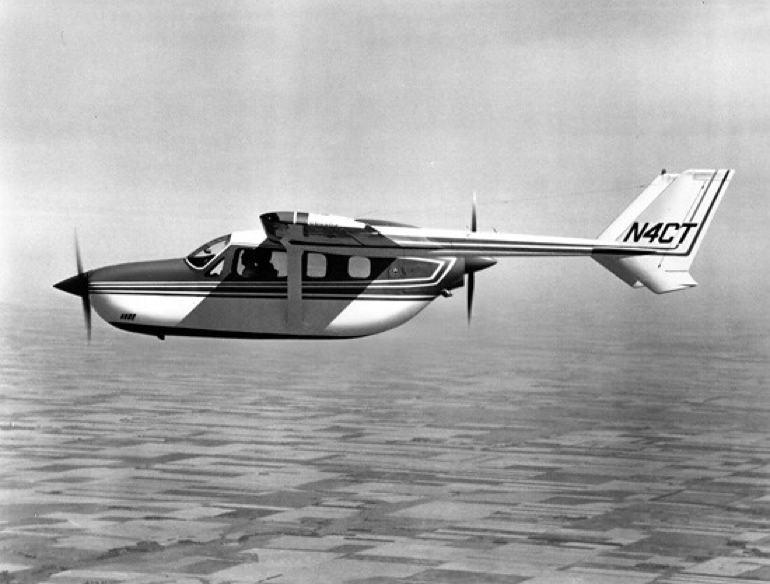
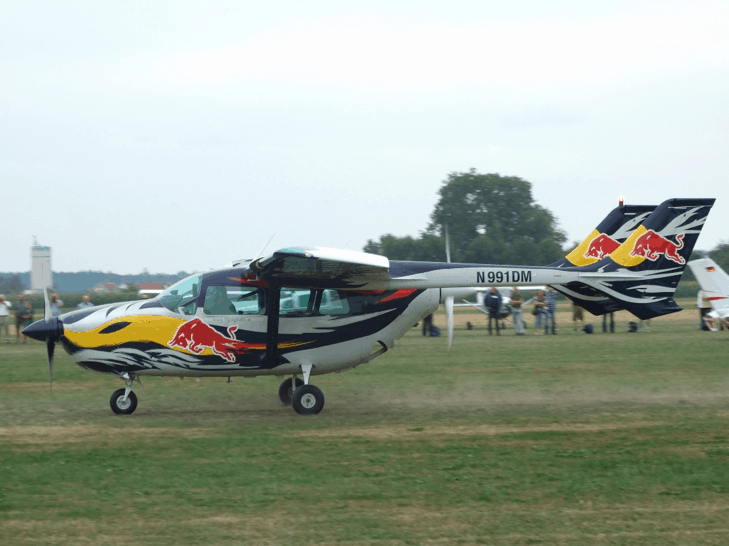
Useful Load (Carrying Capacity) of a Cessna 340
The Cessna 340 has an average empty weight of 3,996 pounds and a gross weight of 5,990 pounds, meaning its effective useful load is around 2,024 pounds. It has a typical fuel capacity of 163 gallons which means the full fuel useful load is approximately 1,091 pounds.
The Cessna 340 was a development off of the 310 in an effort to go faster, higher, and farther. It wasn’t quite the size of the 414 but had design elements borrowed from that as well as the 310. All in all, 1,287 were built and the pressurized version (the unpressurized version was the 335, of which only 64 were built in its one year of production) was by far the most popular. The pressurized cabin, strong useful load, and 200kt cruise speed made this a favorite for traveling families and business flyers alike.
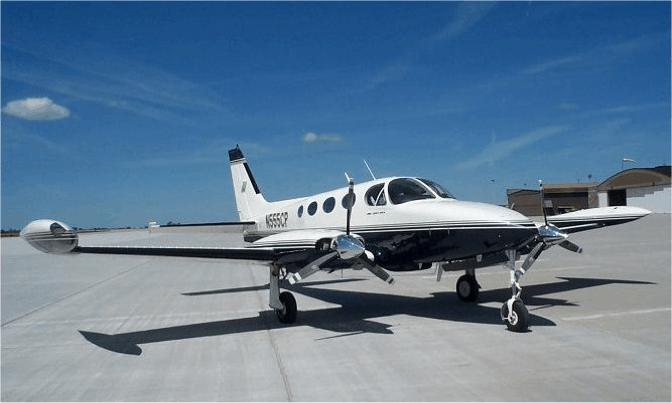
Useful Load (Carrying Capacity) of Cessna 350 Corvalis (Columbia)
The Cessna 350 Corvalis (previously called Columbia) has an average empty weight of 2,300 pounds and a gross weight of 3,400 pounds, meaning its effective useful load is around 1,100 pounds. It has a typical fuel capacity of 102 gallons which means the full fuel useful load is approximately 488 pounds.
There’s a bit of confusion in the naming convention of the Cessna 350’s and 400’s. Originally this airplane was produced by Columbia Aircraft which ended up going bankrupt and sold to Cessna (technically Textron, Cessna’s parent company) in 2007.
The aircraft was originally called the Columbia 350 or Columbia 400, but after Cessna acquired Columbia they changed the marketing name to the Cessna 350 Corvalis and Cessna 400 Corvalis. This was named after a town in Oregon near the Cessna plant that built the aircraft. It isn’t a load hauler but between its sleek all-composite design and all glass avionics it is a fast, comfortable airplane.

Useful Load (Carrying Capacity) of a Cessna TTx (Corvalis/Columbia 400)
The Cessna TTx (previously called a Columbia 400 and then Cessna 400 TT) has an average empty weight of 2,500 pounds and a gross weight of 3,600 pounds, meaning its effective useful load is around 1,100 pounds. It has a typical fuel capacity of 106 gallons which means the full fuel useful load is approximately 464 pounds.
The Cessna TTx was originally called the Columbia 400, but after Textron acquired the bankrupted company in 2007 it renamed it to the Cessna 400, and eventually Cessna 400 Corvalis. After further design modifications it eventually got its final designation as the Cessna TTx in 2011. It is essentially the 350 Corvalis’ bigger, faster brother.
There is not an appreciable difference in the useful load but as with other turbocharged aircraft you obviously get the benefit of increased takeoff, climb, and cruise performance. In practice it’s not a true four person aircraft unless everyone is light and you don’t take on much fuel.
Useful Load (Carrying Capacity) of a Cessna 414 Chancellor
The Cessna 414 Chancellor has an average empty weight of 4,354 pounds and a gross weight of 6,750 pounds, meaning its effective useful load is around 2,396 pounds. The later models have a typical fuel capacity of 206 gallons which means the full fuel useful load is approximately 1,160 pounds. Earlier models have significantly smaller fuel capacities and thus higher full fuel useful loads.
Cessna 414’s increased in performance throughout their production years with significant design modifications in the aircraft size (the wings and fuselage changed by several feet), engines, and fuel systems. They are a very comfortable, pressurized cabin-class aircraft that has plenty of room and is made for the flight levels.
However on paper they realistically do not carry a huge load for their size and still only cruise at around 200kts. For this, the larger 421 Golden Eagle (covered next) became more popular. All in all, Cessna produced 1,070 414’s between 1968 and 1985.

Useful Load (Carrying Capacity) of a Cessna 421 Golden Eagle
The Cessna 421 Golden Eagle has an average empty weight of 4,501 pounds and a gross weight of 7,450 pounds, meaning its effective useful load is around 2,949 pounds. They have a typical fuel capacity of 206 gallons which means the full fuel useful load is approximately 1,713 pounds.
The Cessna 421 Golden Eagle is Cessna’s fastest piston twin, and with its pressurized and roomy cabin-class set up is extremely comfortable. It’s the biggest piston you can buy from Cessna and if you need anything bigger or faster you’re looking at turbine aircraft. Just under 2,000 421’s were produced between 1967 and 1985.
421 owners speak very highly of their experience with the airplane as it has a service ceiling of 30,200 feet and will cruise at 240kts. For a comfortable, fast, high-flying cross country hauler that is still in the piston category, look no further than the Golden Eagle.

Useful Load in Context
I always try to be careful when looking at just the useful load of an aircraft on paper without the context of other metrics beside it. The useful load of an airplane doesn’t tell the full story, because every model is built for a different purpose. Having a “high” or “good” useful load is only in context of what your mission is.
If you are needing to take a full load of people and gear and go far and get there quickly, then the useful load and cruise performance of a 421 might seem “good” to you while that of a 170 might not. Conversely if you are frequently alone and want to see the countryside low and slow, the 140’s full fuel useful load of 410 pounds is perfectly fine for what you need whereas in other situations it might be far too low. Useful load can only be judged within the broader context of what you’re needing the airplane to accomplish.
Additionally, some of the useful loads of airplanes might seem “good” until you add full fuel on top of that. In that instance, be sure to review what the fuel capacity is and the average fuel burn per hour, and line that up against your average mission.
For example my 182 will carry about 1,100 pounds which is a lot, however with full fuel that goes down to about 650 pounds of remaining useful load because I have extended range tanks. However, I have never been in a situation where I need to carry more than one person for 5 or 6 hours at a time (using the full extent of long range tanks).
So in that instance, a full fuel payload of 650 pounds is just fine because in my use of the aircraft there’s never been a situation where I need full fuel (5-6 hours’ worth) and 660 pounds of people and gear. When I need to carry more than 660 pounds, I just don’t take full fuel (and then my average legs will only be 1-3 hours, which is still fine for me and my average mission). Be sure not to interpret the useful load of an aircraft without the context of the other performance specifications as well as your average mission criteria.
The Takeaway
Cessna has created a LOT of different aircraft over the years trying to fill various niches and needs within the aviation world, as you can tell not only by the sheer number of different aircraft they built but also the number of design modifications made throughout the course of any aircraft’s production life. After the production hiatus in the late 1980’s and early 1990’s Cessna came back to produce far fewer models in their piston line than they did in the period before it, and today they only produce the 172, 182, and 206.
While I personally would love to see the return of some of the legacy models, supply and demand doesn’t seem to support the diversity of aircraft production in the piston market like it once did. With the severe pilot shortage upon us, there might be a resurgence in general aviation that could swing the production of aircraft production, but for now there’s a good chance that your favorite model of aircraft is only found in the used marketplace today.
We said it at the beginning, but it’s worth repeating that none of the useful load metrics presented above are meant to be used for the actual weight and balance calculations of any aircraft. Always adhere to the specific weight and balance of your particular aircraft as the above are only used for illustrative purposes.
Blue skies!



